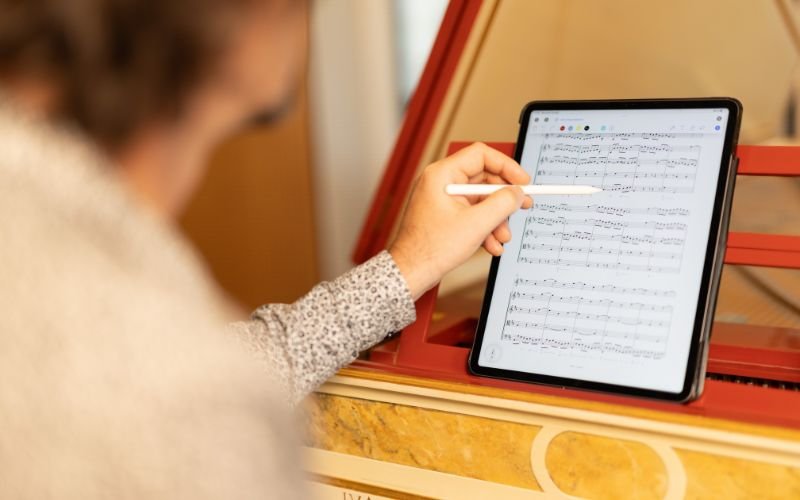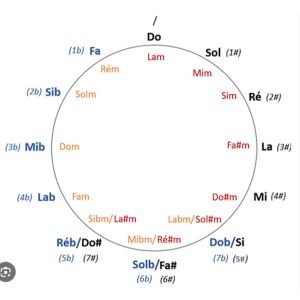7 tips for learning to compose your own music
Do you play piano or guitar and dream of composing your own melodies and writing your own songs? Then you've come to the right place. Composing music requires both creativity and technique. Would you like to create your first piece of music, but don't know where to start? How do you compose a melody? How do you add lyrics to a chorus? While there's no single method for composing a song or melody, there are a few tricks that can help.
From music theory to practice, discover 7 tips to get you started and let your inner composer express himself.
1. Learn the basics of music theory
The first step to composing your first piece of music is to know the basics of music theory. Understanding chords, scales, chord progressions and song structures will give you a solid foundation for composing your first pieces of music.
To begin with, familiarize yourself with the different chord types (chord major, minor, diminished, augmented, etc.) and learn how to form them on your instrument. Next, explore scales and keys. This will help you understand the role of each in creating a particular atmosphere in a musical composition.
Although learning music theory is not always considered essential for playing a musical instrument, it can be extremely useful for composing your first pieces. Learning to read a score will enable you to decipher and interpret music with greater precision and ease, and also to communicate more easily with other musicians.
Would you like to compose a piece of music or play your first notes on the piano, but have never taken music theory lessons? Don't worry, it's never too late to learn, and it's perfectly possible to take up music as an adult!
🎼 Feel the need to deepen your knowledge or have trouble composing your first melody? Get some help and take a few music theory or music lessons online with a teacher.
2. Listen to a wide variety of music
Broaden your musical horizons by listening to songs in a variety of styles or from different eras than you're used to. Whether it's jazz, rock, classical, hip-hop or even electronic music, each style offers its own harmonies and rhythms.
By carefully analyzing the compositions you love, you'll understand what works in a piece of music and how these elements can be applied in your own songs. Study the structures of your favorite songs, such as verse-chorus form, chords, bridges, melodies and breaks. Knowing how these elements fit together will help you :
compose a piece of music more easily,
improve your creativity,
3. Start with simple ideas
When you set out to compose music, start with simple ideas. Choose a few basic chords or create a simple melody to play on your instrument, then compose from there.
By concentrating on just a few notes, you'll take more time to work out the structure of your piece of music and retain it more easily in your memory. What's more, simple musical compositions often have a universality and accessibility that make them quickly appealing to a wide audience.
Looking for inspiration to create your own melody? Take existing chord progressions and modify them as you wish, adding your own personal touch.
🎸 You play various musical instruments or are part of a band group of musicians ? Take the opportunity to enrich your musical composition by mixing instruments. For example, you can overlay guitar chords with piano arpeggios or bass lines to add depth and texture to your track. By combining different timbres and sound textures, you create a diverse sonic palette that makes your composition more dynamic.
4. Find chords that go well together
To create a harmonious musical composition, find chords that work well together. Whether you play piano, guitar or any other instrument, explore different combinations of chords and notes to discover new sounds and find a harmony you like.
On the piano, for example, you can experiment with major, minor, diminished, augmented and many other chords. Each type ofchord has a different sound and can evoke different emotions. Similarly, on the guitar, you can play open chords, barre chords or enriched chords to vary your harmonic palette.
Another useful technique for composing a song or melody is to use the cycle of fifths. This musical concept enables you to identify chords that naturally follow each other and complement each other harmonically. As you progress around the circle of fifths, you'll find smooth transitions between different chords.
5. Add text to your melody
How do you go about writing a song? This question often comes up: should you start with the lyrics, then add the melody, or go the other way round? In reality, there are no rules to musical composition.
To write the lyrics of your song, choose a theme that expresses an emotion or an idea you want to put forward. Emotion is at the heart of any musical composition, so take the time to think about what you want to convey. Then explore the words that go with that theme, looking for rhymes and sounds that fit the melody.
At the same time, define the structure of your song. Think about how you want to organize verses, choruses and any bridges or interludes. The structure of your song influences its dynamism and ability to captivate the listener. You can opt for a traditional verse-chorus structure, or experiment with more complex arrangements, depending on the style and mood you want to create.
6. Be patient and persistent
Composing a piece of music takes time, patience and perseverance. Don't be discouraged if your first composition doesn't exactly meet your expectations, and don't put pressure on yourself to achieve something perfect on the first try.
Be prepared to make mistakes and start again before you achieve a satisfying musical composition. Even the greatest artists had to fail and experiment before finding their own musical voice and composing the famous pieces of music you know.
Remain open to criticism and suggestions. Share your music with others, musicians and non-musicians alike, and accept constructive feedback. This can help you identify the strengths of your composition and areas where you can improve.
7. Use music composition tools
To facilitate and support the musical composition process, you can use CAM (computer-assisted music) software. They offer a multitude of features for recording, editing, mixing and producing music professionally. These programs let you experiment with musical composition, using a variety of sounds, virtual instruments and sound effects to bring your musical ideas to life.
Whether you're a beginner or an experienced musician, using CAM software can help you compose music and hone your technical skills.
Musical composition improves with practice. Get into the habit of writing and composing regularly, even if it's just short melodies, a few notes or lyrics or song outlines.
🔥 Do you compose your own music and want easy access to all your scores from your iPad in the blink of an eye? At home, in music class, with your band or remotely, find, annotate and save your scores with ease from the Sheet music reader Newzik !


